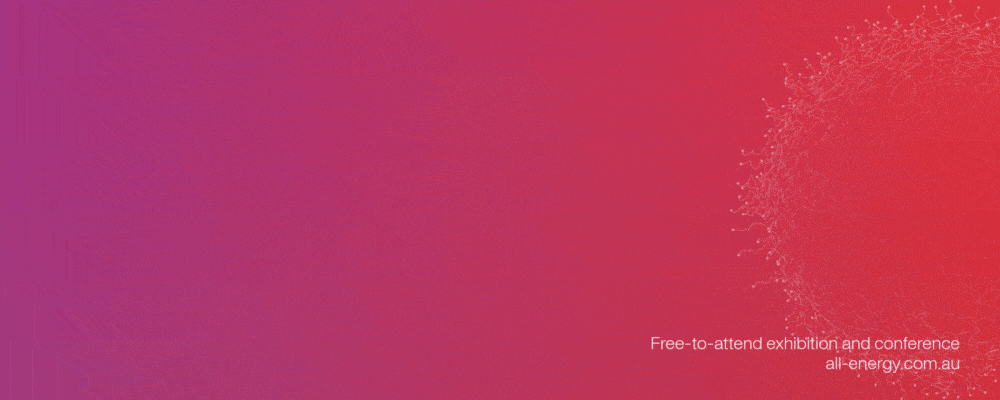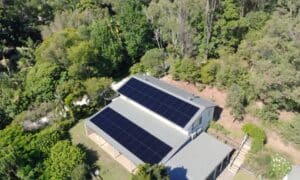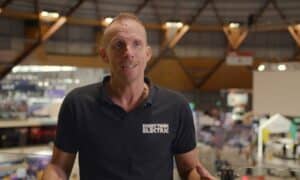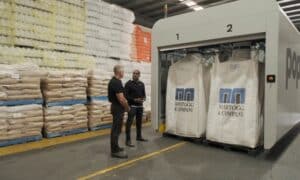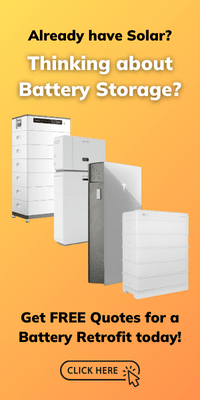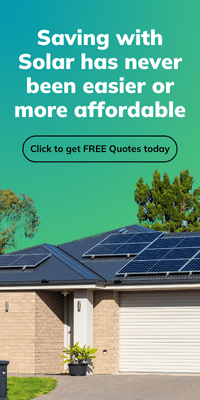The final episode of season 1 of Energy Matters finished with a walk-through of my very own “forever home”. After an exceptional season of innovation, insights, fantastic technology, and useful services, it was my pleasure to summarise the purpose of Energy Matters with a small glimpse of how Aussies can take hold of their energy future. With AIKO solar panels, GoodWe batteries, and a hybrid inverter powering my home, we ended the season with a real-world look at electrification.
From the mundane to a power-house: Transforming my home with solar, batteries, and sustainability
After renting for 24 years and saving for our own property, we packed up our Melbourne apartment and moved to the Gold Coast Hinterland. My wife, Tee-Jay, daughter Coco, and I were ready for a new adventure in a home we could call our own, but we didn’t expect so many blackouts and soaring electricity bills.
Years of shivering through Melbourne winters and sweating through, at times, 40+ degree summers, didn’t prepare us for the Queensland humidity in our unairconditioned home. With frequent blackouts, uncomfortable heat, and rising power bills, it was time to take control of our energy use.
Our goal was simple: increase our energy independence and reduce our carbon footprint.
The renovation
We started by repairing and restoring the roof. The insulation was outdated and clearly contributing to the home’s overheating. We then painted the roof and weatherproofed the home’s exterior. A fresh coat of paint and low investment helped transform our place from drab to fab.
Next up, cooling. Installing smart split systems in key zones and using app-controlled timers helped us manage heat efficiently without putting pressure on our power bills.


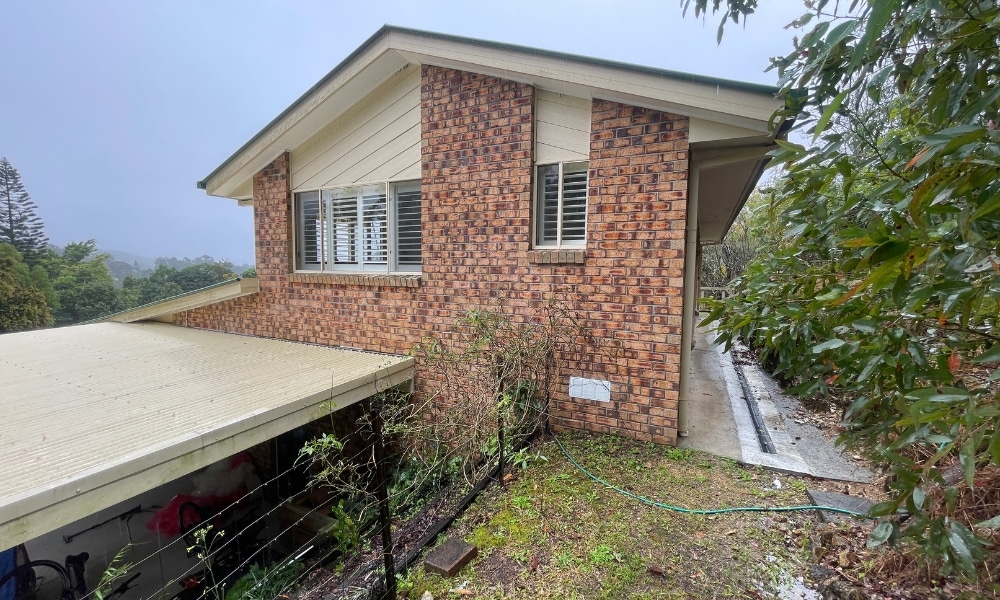

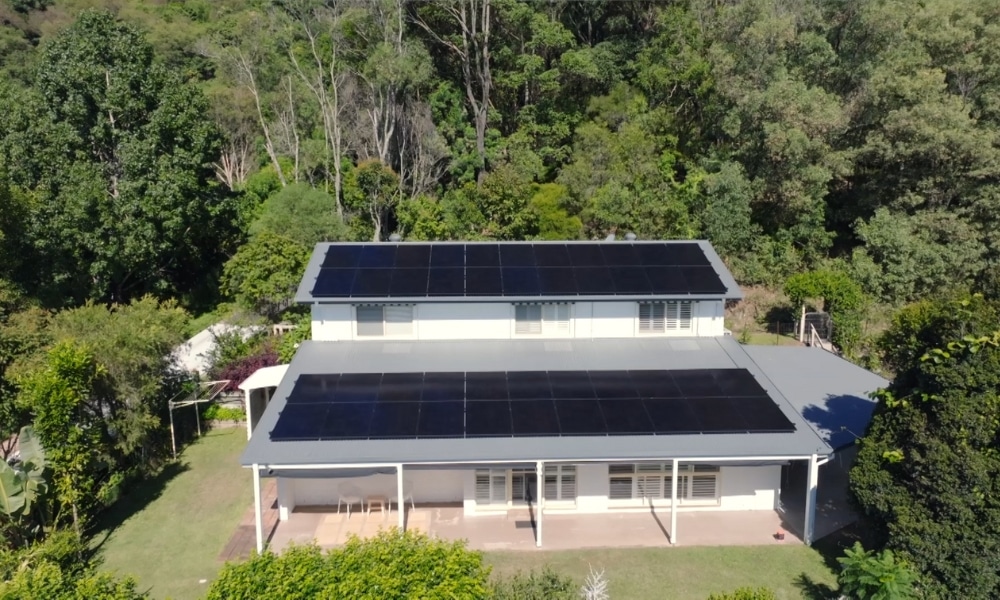
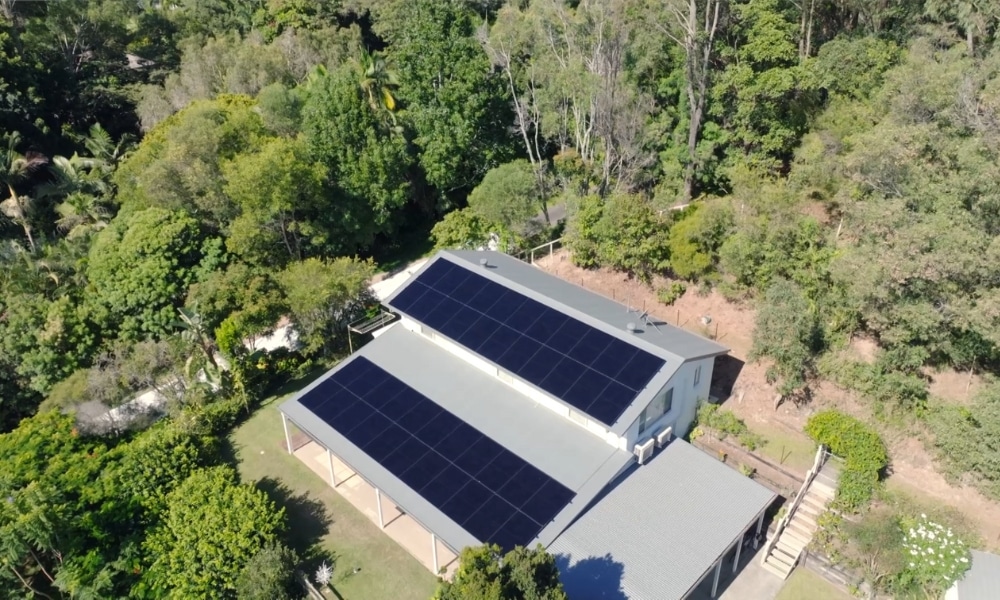

With over 200 beautiful trees already on the property, we planted 13 more—all fruit trees—to give us fresh produce and reduce grocery runs. With 1.7 acres of nature to manage, we also chose to look past petrol-powered garden tools and go with a suite of battery-powered gear. Less noise, no fumes, and better for the planet…the downside was the additional electricity required to charge the batteries.
To compensate for the addition of air-conditioning, the charging of batteries, as well as finally achieving our energy goals, it was time to install solar and battery storage (something I have been dreaming about for over 15 years).
Saying goodbye to blackouts with AIKO and GoodWe
You know a plan is solid when nature reminds you why it matters. With the help of the exceptional team at Auswell Energy, we installed 20kW of AIKO Neostar 2S solar panels on 26 February, planning to install the GoodWe inverter and battery shortly after.
Then came Cyclone Alfred on March 6. Nine long days without power or internet had us questioning our decision to stagger the installs, but it also reminded us, more than ever, why embracing renewable energy isn’t just practical, it’s deeply personal. In a world where the climate is shifting so rapidly, resilience starts at home.
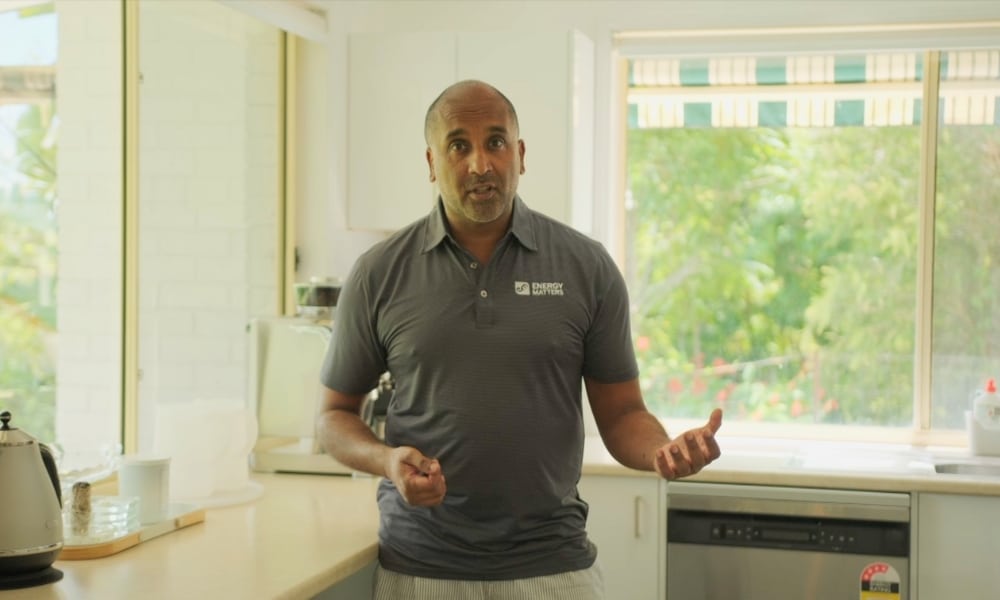



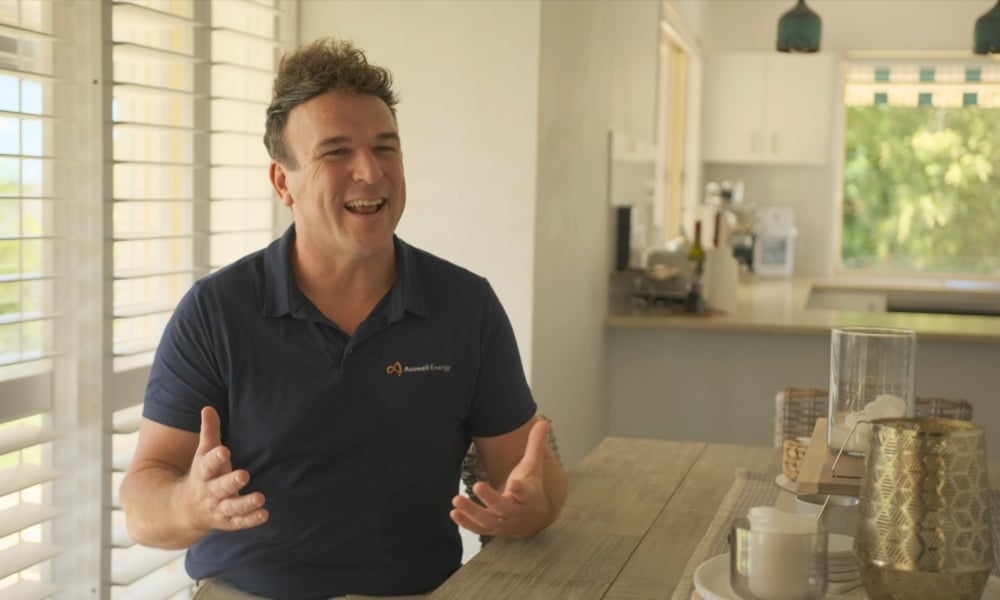
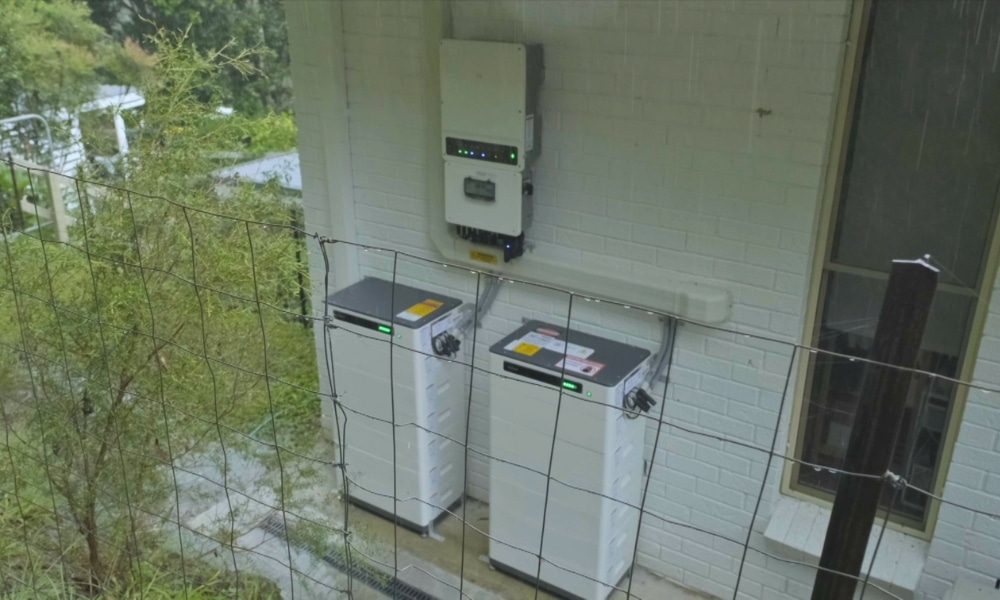

On April 1, we installed the 10kW GoodWe EHB Hybrid Inverter along with 38.4kWh of GoodWe’s Lynx F G2 Series battery storage. Yes, we’ve added far more storage than we typically need day-to-day, but there’s a method to the madness. While the inverter allows our solar system to keep running during a blackout—powering the home and recharging the batteries—cloudy skies can still limit solar production. That’s why we chose to oversize the system. It’s better to export excess energy, support the grid during demand shortages, and be prepared than to fall short when Mother Nature throws her next curveball.
The change was instant and dramatic. Multiple blackouts have hit the area since, and we haven’t even flinched. The transition from grid to battery power is seamless. There’s only a flicker of the lights to let us know it’s happened.
Why we chose AIKO solar panels and a GoodWe inverter and battery
With so many incredible brands & products to choose from, ultimately what you go with is a personal choice and subject to your actual needs. For me, choosing AIKO and GoodWe was an easy decision. During Energy Matters, I had the chance to visit their manufacturing facilities in China, and I was genuinely impressed.
From the moment I stepped inside, their attention to detail, commitment to R&D, and high-quality build stood out. The sleek, all-black AIKO panels didn’t just look the part—they delivered exceptional performance. When paired with a rock-solid GoodWe hybrid inverter and ultra-safe battery stacks, the system practically sold itself.
I’m the kind of person who likes to see the tech up close before committing. Meeting the teams behind the products and seeing their dedication to the Australian market firsthand gave me complete confidence in our choice.
Want to know more? Check out the segment overview for a deeper dive into the technology we installed.
What it means to be carbon-positive—and how we’ve achieved it
Walking the talk has always mattered to me. After 26 years in the energy and renewables industry, I’ve consistently looked for ways to shrink my personal carbon footprint and cut down on energy costs.
Living in a high-rise made big changes difficult. While it was perfect for public transport, close to work and school, and right near the city, options for solar and sustainability were limited.
After years of patiently saving and searching, we finally found our dream (and affordable) home on the Gold Coast—and with it, a world of new possibilities. Today, we’re proud to say we’ve gone beyond net zero, we’re now carbon positive.
Aside from the changes shared above, we’ve taken extra steps to shrink our impact:
- We both work from home and only drive for shopping or social outings
- We offset our carbon emissions every time we fly
- Coco buses or cycles to school
- We mulch garden debris to use around the property, reducing bin collections & eliminating tip runs
- We compost food scraps and use them to nourish our fruit trees
Next on our journey: we’re adding an aquaponics system to sustainably raise fish and grow our own veggies right at home. Once we’ve saved enough, our large GoodWe battery system will power an EV (replacing our current family car)—another big step toward a cleaner, self-sufficient lifestyle.
Wrapping up season 1 and what’s next
As we close out Season 1 of Energy Matters, I hope our journey has inspired you to make changes—big or small—in your own home or business.
Creating this series was all about helping Australians cut through the confusion and actually see how energy-saving technologies and services work in real life. Instead of getting bogged down by technical jargon and sales pitches, we wanted to show you what’s possible, empowering you to make informed choices and envision how these solutions can transform your own space.
From groundbreaking innovations to everyday heroes making a difference, we’ve only scratched the surface of what’s out there. These solutions don’t just save money on energy bills, they help reduce our carbon footprint and support a healthier planet for generations to come.
I invite you to check out the journey of my home and to get a quote from a local retailer to install solar and battery storage on your own home. Read all about Roshan’s electrified home here.
It’s been an absolute privilege sharing Season 1 with you. I’ve loved every moment, and I can’t wait to bring you even more in Season 2, coming in 2026.
Thanks for reading this to the end and for watching the show; don’t forget, you can catch up on every episode now on 9Now.






